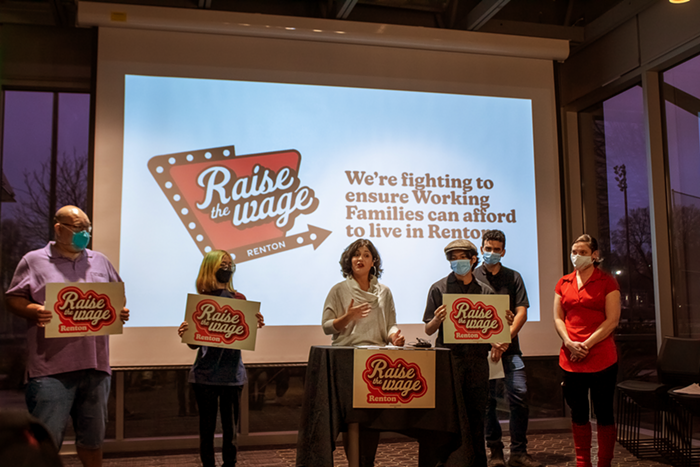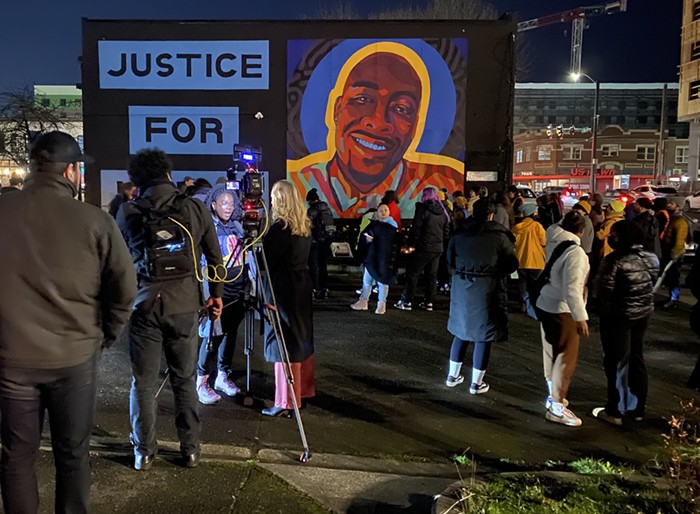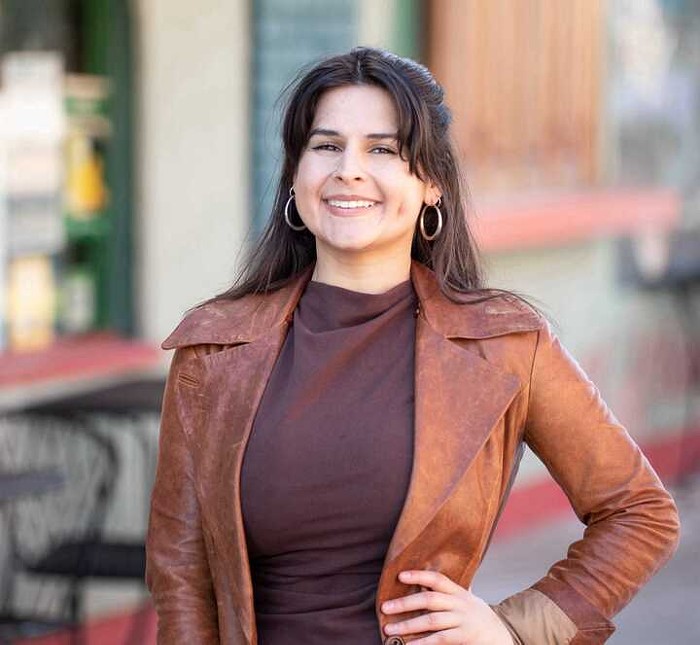
- DH
- A HUGE MEDIA ORGY IS WATCHING OUR LEGAL POT ROLL-OUT What they'll see is a system suffering from errors in implementation at the state level
People are rejoicing that pot stores are opening today—pot stores, for god’s sake—and rejoicing certainly seems appropriate. For too long, pot laws have been a racist, unwinnable, expensive mess. If this alternative to prohibition succeeds, the new regulatory models of farms and stores in Colorado and Washington State could serve as a model for national change.
But if it fails?
If it fails to replace the black market, if it fails to extract profits from cartels and the gangs still get rich, if drugs are still easier and cheaper to buy on the street, and if we fail to make pot an above-board industry? Then it becomes a warning to other states, and fodder for those who argue the illegal pot market is unbeatable and legal regulation is too quixotic for America to pursue.
Which is why Washington's experiment is off to a concerning start.
Most troubling, the system that kicks off Tuesday is designed to replace less than 10 percent of the state’s black market for pot. Of the 24 stores that have received licenses so far (out of 334 expected to eventually get licenses), very few are in dense urban centers where demand is greatest. Only one store is in Seattle—Sodo’s Cannabis City—and it’s one of just two stores in all of King County, the most populous county in the state. Pot is expected to run out quickly in the first weeks. Shortages look inevitable for months or years. The prices, as a result, will likely be artificially high.
So the illicit pot market we’re trying to crush? It will be practically unscathed. That’s not what voters wanted, nor is that necessarily what they voted for.
It’s true that the feds are making Washington State jump through hoops to avoid a legal challenge. It’s also true that some people with licenses but no store yet blame themselves for the delay. (“It’s natural for people to blame others,” John Branch, who has a license to open a store in Seattle, told The Seattle Times. “But I’ve got no complaints… I’m being cautious and careful.”) Still, it's clear that when it comes to many of the structural problems we’re seeing now, they are overwhelmingly the result of the Washington State Liquor Control Board’s preventable mistakes in putting our new legal pot market together. The board, which was tasked with implementing a 2012 marijuana initiative, created many of these problems with a heavy-handed, poorly informed rulemaking process and a lottery that allowed in too many people who weren't quite ready to become pot sellers.
To be clear, we’re not so high that we can’t see the big picture. Legal pot—even a flawed system—is an accomplishment, so we’re not suggesting this system is worse than pot prohibition. No matter how rocky the road to get legal pot or how long the lines to buy a gram, it’s better than the long, rocky road to jail or fines afforded to the pot smokers in 48 other states.
But, Jesus, did the state screw this pooch. Here are some of the biggest things the state bungled on the way to full legalization:
Not enough pot
You'll never believe the name of the consulting firm hired by the state to estimate how much pot we’ll need. It’s a company called BOTEC, short for—no shit—“Back of the Envelope Calculation,” which is shorthand slang for a simplistic guess that lacks mathematical proof. BOTEC told the liquor board in 2013 that Washington needed to license 2 million square feet of pot canopy over the first year of legal stores. That would, according to their estimates, satisfy a mere 25 percent of the existing pot market and leave the rest of market (three-quarters) to run illegally.
And the state went with it.
“What we don’t really understand is why they landed on a 2-million-square-foot plant canopy,” says Hilary Bricken, a lawyer at Harris Moure who oversees the Canna Law Group. “We are not going to capture more of the black market, or even 25 percent, if they keep moving at this rate,” she says.
It turns out, however, the state is far short of even that low-ball estimate. According to liquor board spokesman Brian Smith in a phone call this week, the state has issued only 90 producer licenses for a total of 687,644 square feet of pot canopy—less than 8 percent of what state estimated it would need to grab the illicit marijuana market. Many of those gardens are still weeks or months from harvesting their first plant.
Ironically, this means that when the attention on buying legal marijuana is at its highest, we’ll have only a tiny fraction of the supply necessary to meet demand.
“We are not going to replace the black market overnight,” says Smith. “Our goal was to create rules to govern a system and we have completed the rules.” When will the state replace most of the black market? “I don’t think we have an estimate on that,” Smith says. “We hope to make inroads within five years.”
Meanwhile, the state continues to make opening pot-growing businesses a monumental hurdle, says Bricken. She has represented hundreds of clients trying to break into this burgeoning industry, and says “almost all of them” have been frustrated by trying to work with the state. “I can’t name one that hasn’t been.”
“Do I think there has been over-regulation?” Bricken asks. “Oh yeah.” Besides a lack of transparency from the state, rules changing halfway through the application process, and simply not enough licenses to satisfy demand, Bricken says the state has made it too financially risky to open a pot farm.
For example, the state has required would-be pot farmers to secure a location and meet copious conditions before even being considered for a producer license—which scares off financial backers. The state is “asking them to take the risk before the license is even issued, which most investors will not do,” Bricken says. Compared to retail store proprietors, she says, farmers “need the most equipment, the most space, and the most working capital.”
One entrepreneur named Jane, who asked that we not use her last name, says her start-up costs would exceed $300,000 for an outdoor farm and more than $1 million for an indoor facility, which both require security, surveillance systems, and other specialized equipment to meet state requirements. She said her first year’s harvest would be “small,” and working with the liquor board has been “burdensome” because “it’s not clear what the liquor board wants.”
While Bricken says some producers and processors will succeed—and she acknowledges federal zoning regulations present their own set of complications for farmers—she believes the regulatory system as it stands is riddled with “detrimental flaws that will force some people to fail.” She hopes the legislature will intervene in January to facilitate more stores in more locations, and more suppliers to meet demand.
“A lot of people are not going to drive 25 miles for a $500 ounce when they could get it from their friends,” she says.
Too few pot shops
Seattle is slated to get just 21 cannabis stores. This seemingly-arbitrary allotment is far fewer than the hundreds of dispensaries already serving medical marijuana patients only, and City Attorney Pete Holmes has repeatedly asked the liquor board to increase this number. The board says it may consider the request in the future, but is currently standing by the ridiculous allotment.
This number is a population-based portion of the 334 stores the liquor board decided we should have statewide. Why 334? Because that’s how many state-run liquor stores we had when voters privatized liquor sales in 2012, of course.
Beyond the arbitrariness of this number, the process for granting store licenses was a problem. The liquor board could have licensed retailers after they fulfilled stringent state requirements and were ready to open, but instead it decided to hold a lottery for licenses before anyone had really gotten ready. Some odds-driven investors realized that, despite a limit on owning more than 3 pot shops, the liquor would accept an infinite number of $250 applications during a month-long window last year. So, just like buying raffle tickets, many lottery players stacked the odds in their favor by submitting far more applications than they could even legally operate.
By throwing the fate of legalization to this kind of computerized drawing, rather than allowing ready-to-go businesses to move forward, the liquor board invited the inexperienced and the unqualified, along with cunning California cannabis barons, to literally play a game of chance for $250 a ticket. One result of this ganja gold rush: only one Seattle pot shop is actually ready for opening day.
“Part of the issue is, we may be ready to license people who aren’t ready to be licensed,” says liquor board spokesman Brian Smith. “That is the issue in Seattle. It’s the biggest city in the state, but we were finding a lot of licensees are not ready.”
While some of those people with licenses do blame themselves for the slow progress, not having enough ready-to-go store operators in the pool of licensees is entirely the liquor board’s fault, and it means we won’t have enough pot stores to meet the needs of our city. Consumers will need to drive some distance to find a legal cannabis store, and the black market will continue to thrive.
Not even the state is clear on where stores are allowed
Can I open a pot business here? This should be a simple question. If the state fails to answer it, more would-be businesses fail to open and the state fails its mandate to implement a legal pot market. But the state apparently sometimes can’t—or won’t—answer that question.
Take Boren Place. It’s one of Seattle’s smaller parks, a bench atop a triangle of grass at the intersection of Broadway and Boren Avenues. It’s easy to miss. Google Maps doesn’t even show it as a park. But if it has “facilities for rest and/or recreation,” pot businesses can’t locate within 1,000 feet of it under liquor board rules that grow out of of zoning language in I-502.
In October, we inquired about bench-only parks, and liquor board spokesman Brian Smith said that if a city, county, or state agency called a park a park, the liquor board “would likely” consider it a park, but many will be considered on a case-by-case basis. “If we list out all the things a park is or isn’t then we’ve restricted our ability to work with an applicant,” said Smith.
To provide a clear example of such a park, we inquired about Boren Place in February. After researching the issue, Smith provided an official answer: Boren Place “may be considered a park by definition.”
This inability to provide clear guidelines on what qualifies as a park—and where you are prohibited from opening a business—may allow the liquor board flexibility, but it adds uncertainty for applicants and prevents the public from validating the data being used to disqualify applicants.
Likewise, the state has purchased much of its mapping data from Esri, a private mapping company, and their contract restricted distribution of that data (the Attorney General’s Office also declared Esri-licensed data exempt from public disclosure). What this means is that cannabis business applicants can’t get access to the same data the liquor board is using to qualify their business locations. So, in effect, the only certain way to know if a location will be disqualified is apply and then be disqualified. This Catch-22 means qualified entrepreneurs will see their pot shop plans unexpectedly flushed down the toilet with no chance to re-apply.
Too many rule changes
The liquor board made numerous off-the-cuff policy changes resulting in delays and increased uncertainty for would-be pot businesses. In January, the board said 500 applications were too close to schools and other prohibited zones and nixed them from the retail licensing lottery. But the next month, the agency said those unqualified applications would be allowed 30 days to change addresses.
The liquor board originally said that using a single property for multiple retail applications would not be allowed, but later changed course on that decision, too, so game-playing investors could submit unlimited applications using a single pot-friendly landlord.
The board recently announced that applicants who update their address will be placed on hold for six months as punishment. But assuming a potential grower updates their address to a location they actually plan to grow pot, placing them on six-month hiatus won’t get pot to market any faster.
Such willy-nilly rule changes are the liquor board’s reaction to problems it created after introducing too much game theory into the licensing process. As a result of this, and all the other liquor board stumbles, consumers will be forced to wait for most stores to open and for a consistent supply of legal cannabis, and they will be gouged on pricing in the meantime.
Correction: Due to an editing error, this post originally said that 687,644 square feet of pot canopy would grab 8 percent of 25 percent of the marijuana market. In fact, that square footage would grab 8 percent of the total illicit marijuana market.


















